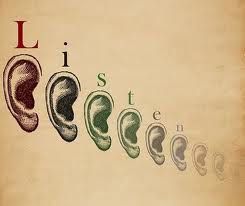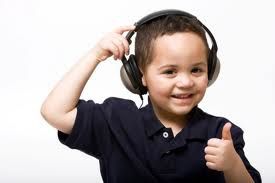
What is it?
This is a sound based programme that combines the therapeutic benefits of music with sophisticated sound technology. It produces specific effects on listening skills and listening difficulties, i.e., the ability to perceive, process and respond to sounds.
People with listening difficulties often have perceptual- motor, attention and learning difficulties. These are in turn largely due to sensory processing problems.
‘Listening’ is a function of the entire brain and training these sensory functions goes well beyond stimulating the auditory system-we tend to listen with our whole body.
The listening programme uses sound stimulation in combination with sensory integration, with a strong emphasis on vestibular and postural movement strategies. It integrates a number of electronically synthesised or altered CD’s based on ideas of various sound technicians, physicians and hearing specialists.
When used with sensory integration treatment, the listening programme has given remarkable results and greatly reduced the time it takes to meet treatment goals.
Changes are typically observed in Sensory Modulation, ‘attention’ and ‘behavioural organisation’. Changes can also be seen in balance, postural organisation and motor skills as well as improved organisation in time and space, communication and pragmatic use of language.
The listening programme can be used for clients of all ages with a wide array of clinical pictures who are experiencing difficulties with sensory processing and listening skills.

Vital Links (www.vitallinks.net ) offers Therapeutic Listening courses for therapists to enable them to provide innovative clinical tools and strategies that can be implemented in schools clinics and homes.
How does it work?
The Therapeutic Listening Programme was originally designed by Dr Alfred Tomatis who had music and sound electronically altered for the purpose of training the ear. He was a French ENT specialist who had an interest in music and most of his clients were singers or musicians. He said, “The voice can only produce what the ear can listen to.”
The programme comprises CD’s that are modified using alternating high and low pass filters that accentuates the high frequencies from the low frequencies; and the foreground from the background.
The sounds stimulate and retrain different areas of the brain. They have an exercising effect on the muscles in the middle ear. As the middle ear muscle focuses on sound in the environment it contracts and relaxes. This is not automatic in some individuals who have listening problems.
Headphones are used due to the importance of the high frequency sounds that tend to die out quickly as they travel in air. They are the sounds that children most often have difficulty capturing and attending to. Headphones became part of the adaptive equipment to capture the sound.

The following areas of change have been noted with a listening programme:-
- Arousal, attention and focus
- Receptive and expressive language
- Processing speed for movement and language
- Integration of movement and sound
- Balance and co-ordination praxis (sequencing and timing)
- Range of effective expression
- Self motivation
- Awareness of environment
- Sensory modulation including sensory awareness
- Organisation
- Self initiation of play and work behaviour
- Self initiation of verbal interaction.

Other therapeutic listening programmes are available which run along the same lines and stem from Dr. Tomatis’ original findings. The Integrated Listening Programmes such as the Denver Pilot Study clearly shows the results that can be achieved from therapeutic listening. www.integratedlistening.com
write a comment …



/idata%2F4130722%2Ftumblr_lcnvcutTS81qdp3nbo1_500.jpg)
/idata%2F4130722%2FBaby-swim.jpg)
/image%2F1484276%2F20171122%2Fob_85a846_radiator-anniversary7.jpg)
/https%3A%2F%2Fassets.over-blog.com%2Ft%2Fcedistic%2Fcamera.png)
/image%2F1484276%2F20151001%2Fob_ae1435_dsc02009.JPG)